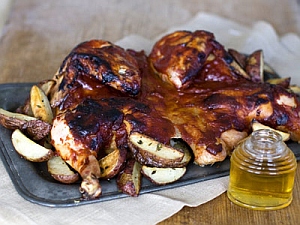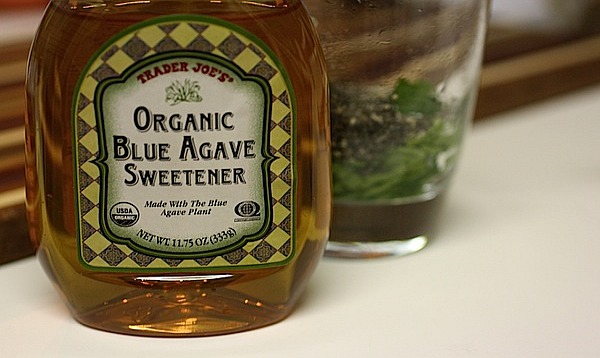Mexico - Finally - a way to enjoy agave without the hangover! That's right, agave nectar, the current darling of the alternative sweetener world, is made from the same plant that is used to produce tequila. And it goes down so much easier (squeeze of lime and dash of salt are optional.)
But let's start with some basics. Agave nectar (sometimes called agave syrup) is an amber liquid that resembles honey but has a cleaner, sweeter, even fruitier flavor. Not long ago it was mostly unheard of in the United States, existing primarily in the backwaters of the natural foods world.
In recent years, it has evolved into a booming $200 million industry. Suddenly, it's being used in everything from ketchup and barbecue sauce to baked goods and ice cream. And let's not even get started on the cocktail scene.
Why all this attention to what amounts to the juice of a large cactus-looking plant native to Mexico? It helps that agave syrup is sweeter than conventional sugar. So while it has the same calories as white sugar, you can use less of it without sacrificing flavor. When substituting, aim to use about 25% less than you would with refined sugar.
Many consumers also have latched on to agave's glycemic appeal. That is a fancy way of saying that agave syrup is believed to have a less intense effect on blood sugar levels.
When shopping for agave, check the grocer's baking or honey sections, as well as the natural foods aisle. It usually is sold in squirt or dispenser bottles. While some companies offer flavored varieties, the most common choices are light and amber.
Light agave syrup is highly filtered and lightly heated. Amber syrups are less filtered and heated slightly more. The latter also has a more robust flavor. Think of it this way – light agave is to amber agave as honey is to maple syrup.
Now that we've had our SAT moment, what should you do with agave? In general terms, light agave works well with light, fruity desserts. Heavily seasoned items, such as pumpkin pie, calls for the amber. The darker agave also makes a very fine pancake or waffle topping on its own.
Agave-Barbecue Roasted Chicken
 |
Prep time: 25 minutes
Cook time: 1 hour
Serves 6
Ingredients
One 3 to 5 pound whole chicken
Kosher salt and ground black pepper
For the barbecue sauce:
One 6-ounce can tomato paste
5 tablespoons agave syrup
3 tablespoons olive oil
5 tablespoons cider vinegar
1 1/2 tablespoons Dijon mustard
1 teaspoon kosher salt
2 teaspoons ground cumin
1 teaspoon cinnamon
1 teaspoon garlic powder
1 teaspoon Worcestershire sauce
1/2 teaspoon ground black pepper
Instructions
Heat the oven to 400 degrees.
Place the chicken on a cutting board with the breast down. Use kitchen shears to carefully cut from the neck hole down the length of the backbone and out the rump. Repeat on the other side of the backbone. Discard the backbone. The cutting will require a little effort, but the shears should cut through the bones without too much difficulty.
Spread open the chicken, exposing the cavity. Sprinkle the inside with salt and pepper. Overturn the chicken and place it cavity-side down in a roasting pan just a bit larger than the chicken. Gently press the chicken to flatten. Season over and under the skin with salt and pepper. Cover tightly with foil and roast for 30 minutes.
Meanwhile, prepare the barbecue sauce. In a medium bowl, whisk together all ingredients. Set aside.
After the chicken has roasted for 30 minutes, remove the pan from the oven and remove the foil. Use a pastry brush to brush the barbecue sauce thickly over the entire chicken. Return the chicken to the oven and roast for another 30 minutes, or until the meat at the thickest part reaches 165 degrees.
Per serving: 580 calories; 330 calories from fat (57 percent of total calories); 37 g fat (10 g saturated; 0 g trans fats); 150 mg cholesterol; 22 g carbohydrate; 39 g protein; 2 g fiber; 950 mg sodium.


